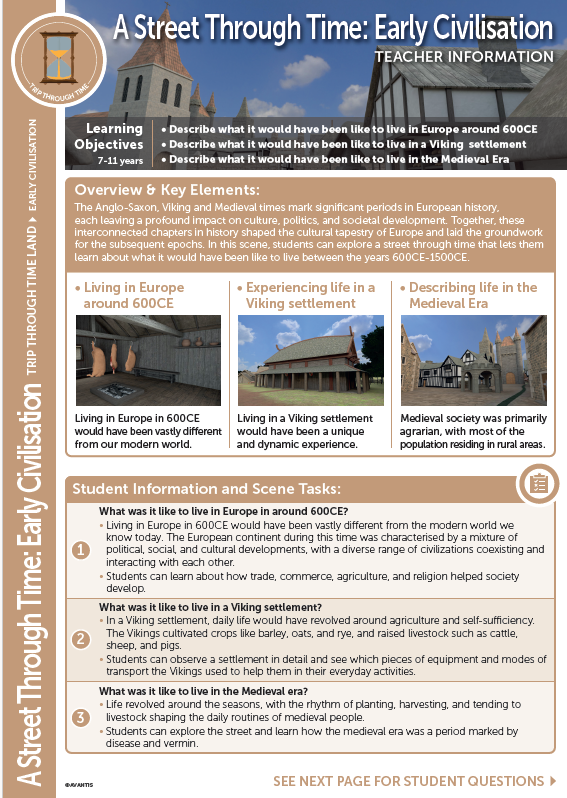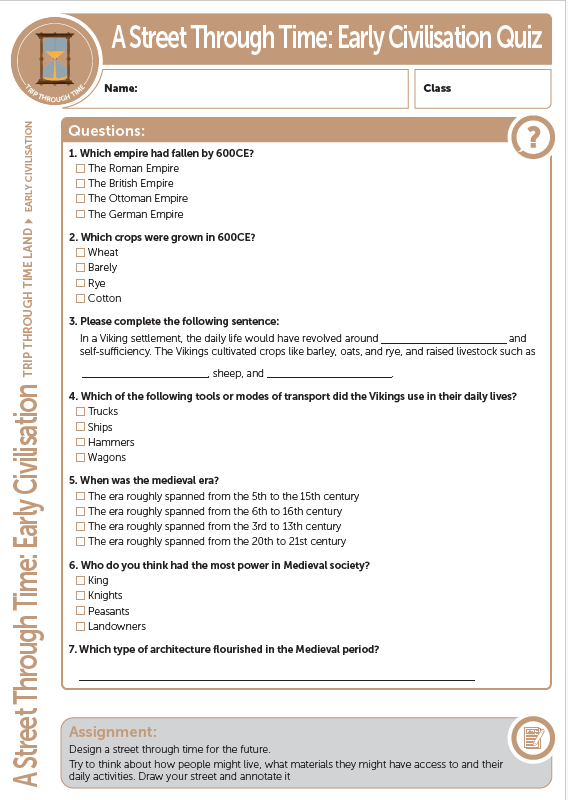 Loading...
Loading...
Initial language selection is based on your web browser preferences.
# Lesson Objectives: 1: Describe what it would have been like to live in Europe around 600CE.{.info} 2: Describe what it would have been like to live in a Viking settlement.{.info} 3: Describe what it would have been like to live in the medieval era.{.info} # What was it like to live in Europe around 600CE?{.objective .objective1} Living in Europe in 600 CE would have been vastly different from the modern world we know today. The European continent during this time was characterised by a mixture of political, social, and cultural developments, with a diverse range of civilizations coexisting and interacting with each other. Students can learn about how trade, commerce, agriculture, and religion helped society develop. # What was it like to live in a Viking settlement?{.objective .objective2} In a Viking settlement, daily life would have revolved around agriculture and self-sufficiency. The Vikings cultivated crops like barley, oats, and rye, and raised livestock such as cattle, sheep, and pigs. Students can observe a settlement in detail and see which pieces of equipment and modes of transport the Vikings used to help them in their everyday activities. # What was it like to live in the medieval era?{.objective .objective3} Life revolved around the seasons, with the rhythm of planting, harvesting, and tending to livestock shaping the daily routines of medieval people. Students can explore the street and learn how the medieval era was a period marked by disease and vermin. # Teacher Resources ### Download Teacher Notes [](https://avnfs.com/DLwg6kVxxdSsqx8zimr_JLSIE6U3HYQ86R9cYy_sIwo?size=997615&type=application%2Fpdf&name=A+Street+Through+Time-+Early+Civilisation+Teacher+Notes+1.pdf) ### Student Quiz Answers Document [](https://avnfs.com/QtvC5l03LTEqfekJQuhIOeDDNWGCpXBi_oElOJ3qsBA?size=547725&type=application%2Fpdf&name=A+Street+Through+Time-+Early+Civilisation+Teacher+Notes+2.pdf) ### Download the Student Quiz Document [](https://avnfs.com/l-BHSTxJMYAag_R_X7Q2RmTtwAyYm7eDVlUJej4Uavs?size=96394&type=application%2Fpdf&name=A+Street+Through+Time-+Early+Civilisation+Teacher+Notes+3.pdf)